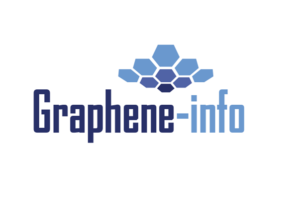
Researchers at Clemson University in the U.S have designed a prototype Aluminum-ion battery (AIB) that uses a graphene electrode to intercalate tetrachloroaluminate (AlCl4–). The researchers have used the device to investigate the effect of defects and doping on battery performance.
Aluminum-ion batteries are gaining recognition in the scientific community as a potential alternative to Li-ion battery systems, but so far there have been many obstacles. Unlike in LIBs, where the mobile ion is Li+, aluminum forms a complex with chloride in most electrolytes and generates an anionic mobile charge carrier, usually AlCl4– or Al2Cl7–. The team at Clemson University’s Nanomaterials Institute have elucidated the intercalation mechanism of the AlCl4– anion in graphene electrodes, and provided a unique insight into the influence of defects and doping on the intercalation process.
Introducing defects into graphene has previously been shown to shift the Fermi level of the material, which corresponds to the cell potential of the battery. It has also been observed that the introduction of pores can facilitate access to the inner volume of the cathode, allowing ions to move in and out quickly for fast charging.
To investigate these factors, the research group formed few-layer graphene (FLG) by decomposing methane on nickel foam at high temperatures. The presence of defects was controlled by sintering the pristine FLG with argon plasma. Alternatively, different levels of nitrogen dopants were introduced by adding a nitrogen precursor during the original deposition process. After they dissolved the nickel foam, the researchers were left with either pristine or modified graphene.
The team constructed batteries with aluminum anodes, pristine or modified FLG cathodes, and an ionic liquid with AlCl3 salt as the electrolyte. With pristine FLG as the cathode, the battery achieved a capacity of over 70 mAh/g for 1000 cycles. Although such a capacity is modest compared to modern Li-ion batteries, which typically store about twice the charge, the performance was impressive considering the extremely high charging/discharging rates that were achieved, with a full charge–discharge cycle taking less than three minutes.
The researchers attribute the exceptional reversibility they observed in this system to the robustness of the pristine FLG. When the FLG with induced defects was tested in a battery, the researchers found that it did not perform well at high current rates, since the defects resulted in poor interconnectivity of the FLG sheets at the edges, and inhibited electron transfer during fast cycling. The introduction of nitrogen doping resulted in a significant decrease in intercalation, and caused chlorine gas to be produced. The team speculate that the presence of nitrogen in the FLG induces some catalytic activity, liberating chlorine from the electrolyte.
This work displays the successful design of AIBs with graphene, and demonstrates that this battery configuration can perform well over 1000 cycles at high rates of charge and discharge.


















